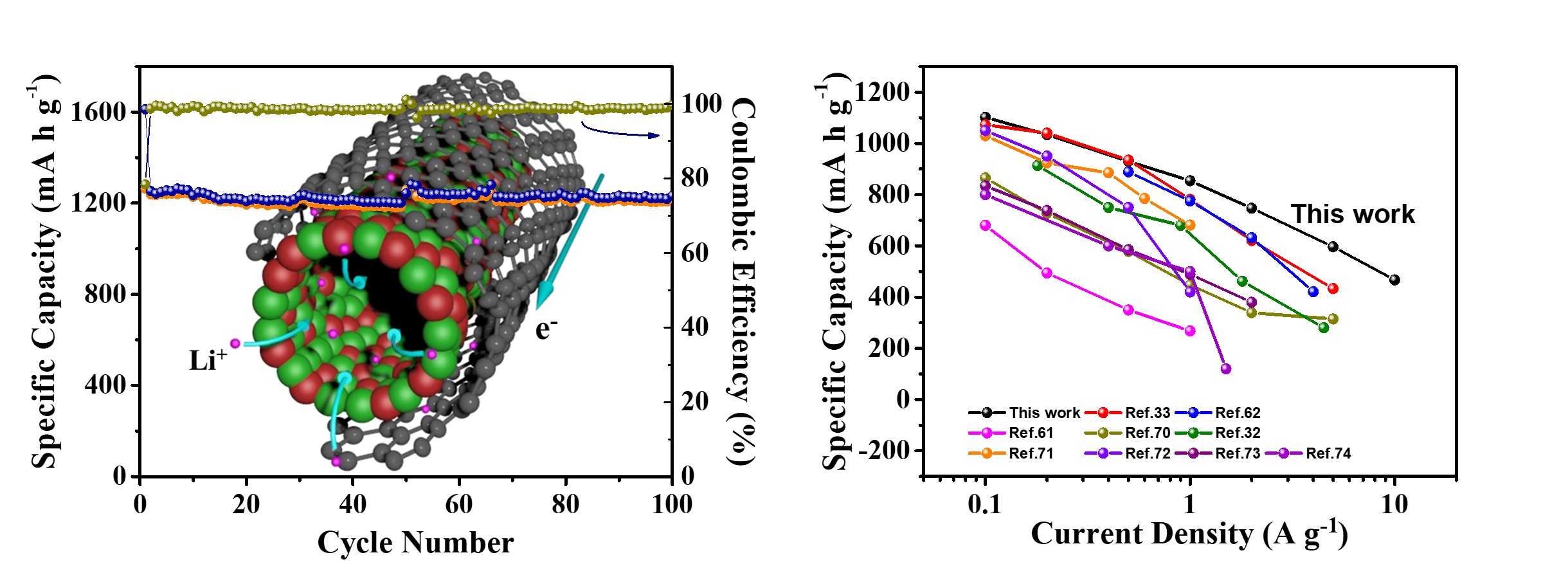Effects of the Inherent Tubular Structure and Graphene Coating on the Lithium Ion Storage Performances of Electrospun NiO/Co3O4 Nanotubes
ABSTRACT: As anode materials for lithium-ion batteries, transition metal oxides show usually high theoretic specific lithium ion storage capacities, but their electrical conductivity remains to be improved and their structural pulverizations during lithiation/delithiation need to be suppressed, which affect severely their lithiation/delithiation rate capability and also the cycling stability. Herein, NiO/Co3O4 nanotubes encapsulated with graphene sheets are designed and assembled. It is demonstrated that as anode for lithium-ion batteries, the as-obtained NiO/Co3O4 nanotubes encapsulated with graphene show excellent electrochemical performance, including large lithium ion storage capability (1206 mA h/g at 0.1 A/g after 100 cycles), high rate capability, and cycling stability. The electrochemical kinetics analyses reveal that the tubular structure not only facilitates lithium ion transportation, but also provides even more spaces for lithium ion storage. The external encapsulated graphene sheets can improve the electrical conductivity of NiO/Co3O4 nanotubes, and a ff ord also certain lithium ion storage capacity. Those structural and component factors synergistically account for their improved electrochemical performances.

